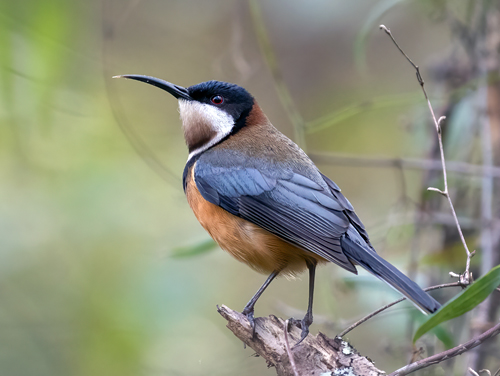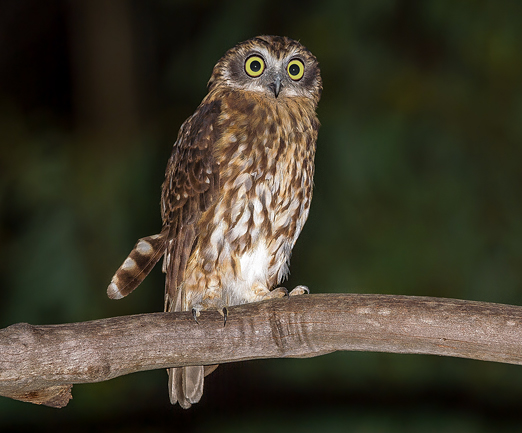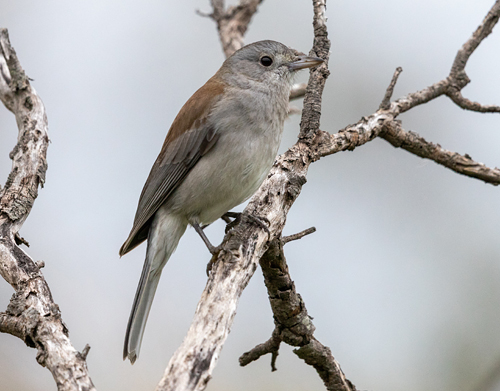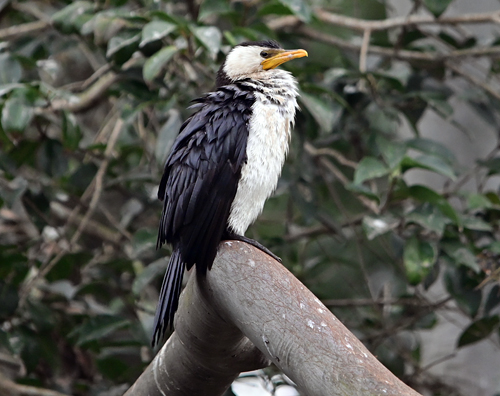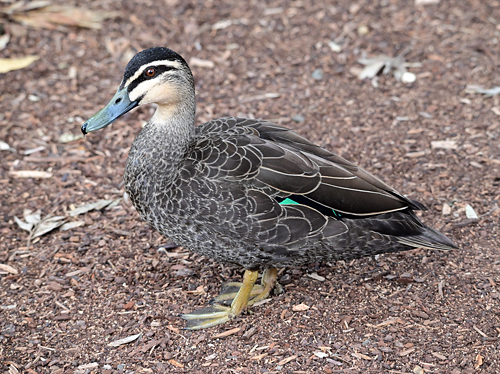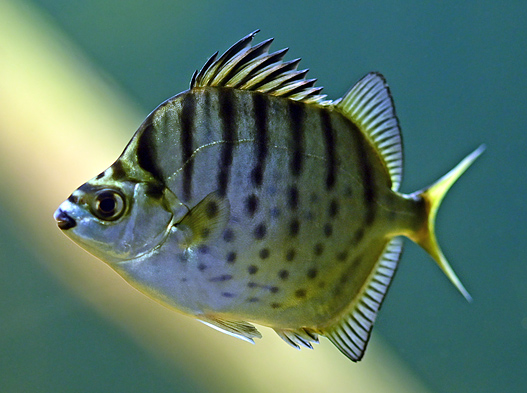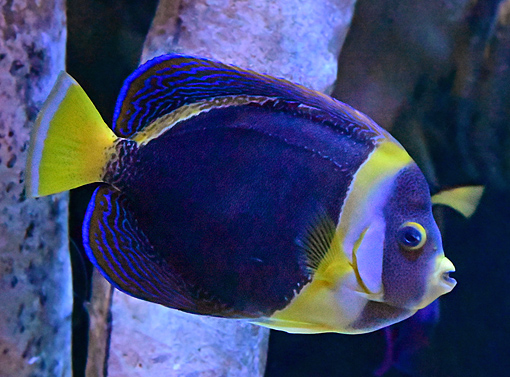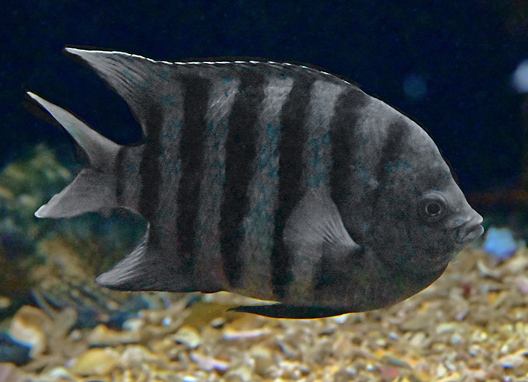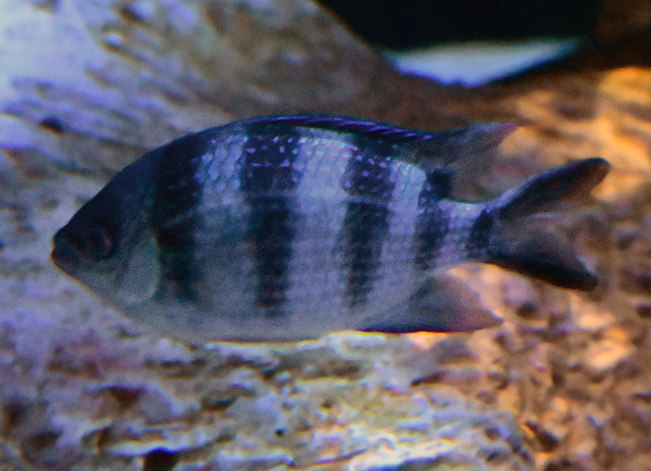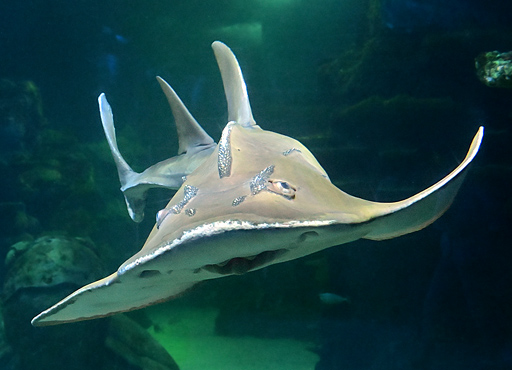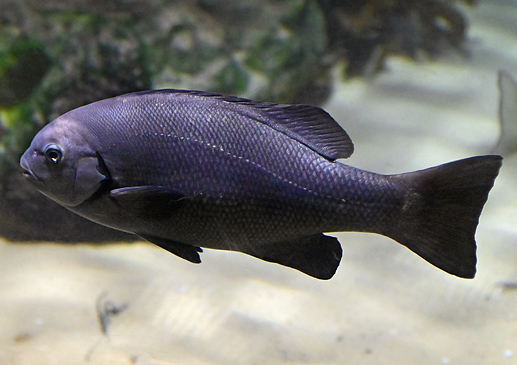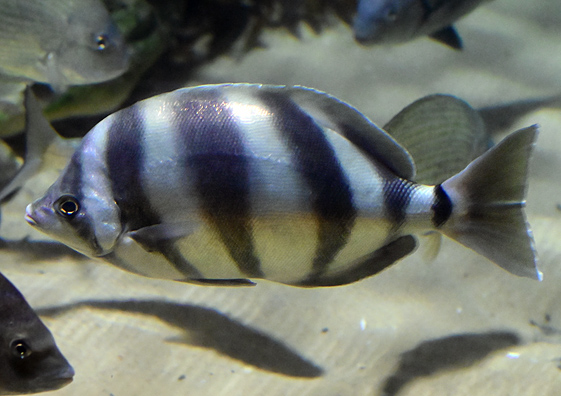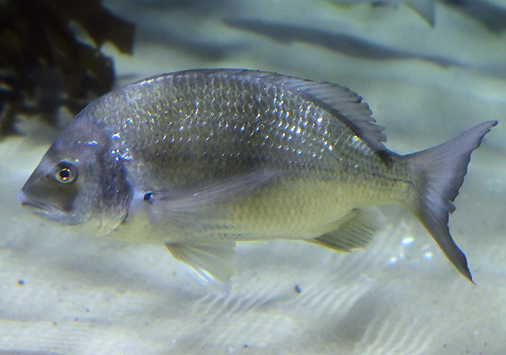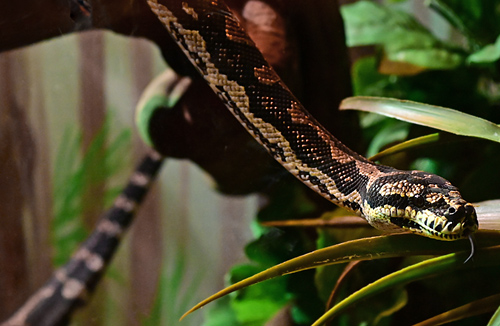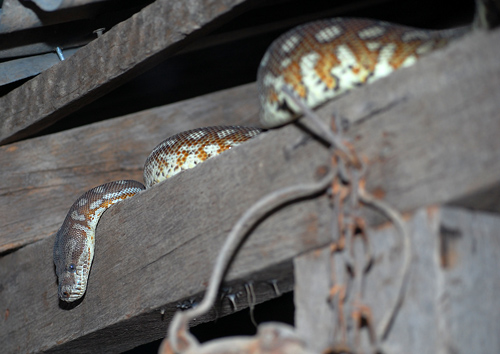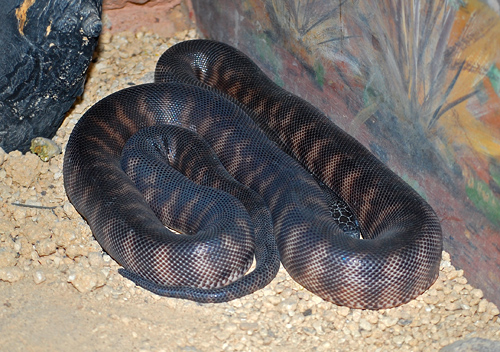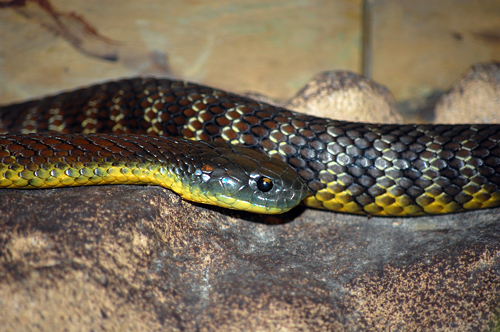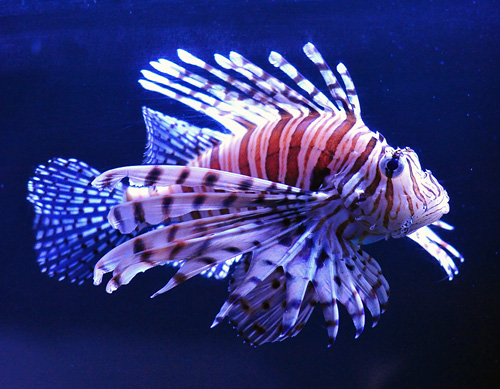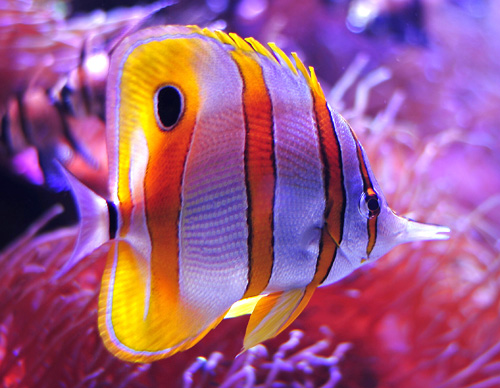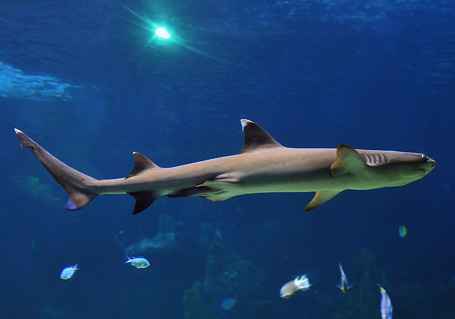Tiger Snake

Notechis scutatus
Danger: ![]() Dangerously venomous
Dangerously venomous
Size: 0.9 to 2 metres
Family: Elapidae (Elapid snakes, about 60 species in Australia, about 300 species in the world)
Distribution: In the south and relatively coastal areas of Australia, to a few hundred km inland, about 2/3 of VIC, and all of TAS. To as far north as the southern parts of coastal QLD.
Habitat: Rainforests in the north parts of their range, and dry forests in the southern parts of their range.
Danger: When provoked, it flattens its head and neck and raises up towards its aggresor. Tiger snakes are very dangerous.
References: Wilson and Swan.
About the Tiger Snake
Their colour and appearence can vary widely, from completely black all over (these are found mostly in the very south of SA and islands of Bass Strait), to much lighter olive-yellow colours. They may have bands (like "tiger stripes") or be patternless. Those on the mainland are most often striped at least somewhat.
Diet: The tiger snake feeds mainly on frogs though they also eat lizards, small birds and mammals.
Breeding: Produces large litters of live young. As many as 64 baby tiger snakes in the one birthing have been recorded!

Photo: Featherdale Wildlife Park, Sydney NSW. Higher Resolution 3008 x 2000.
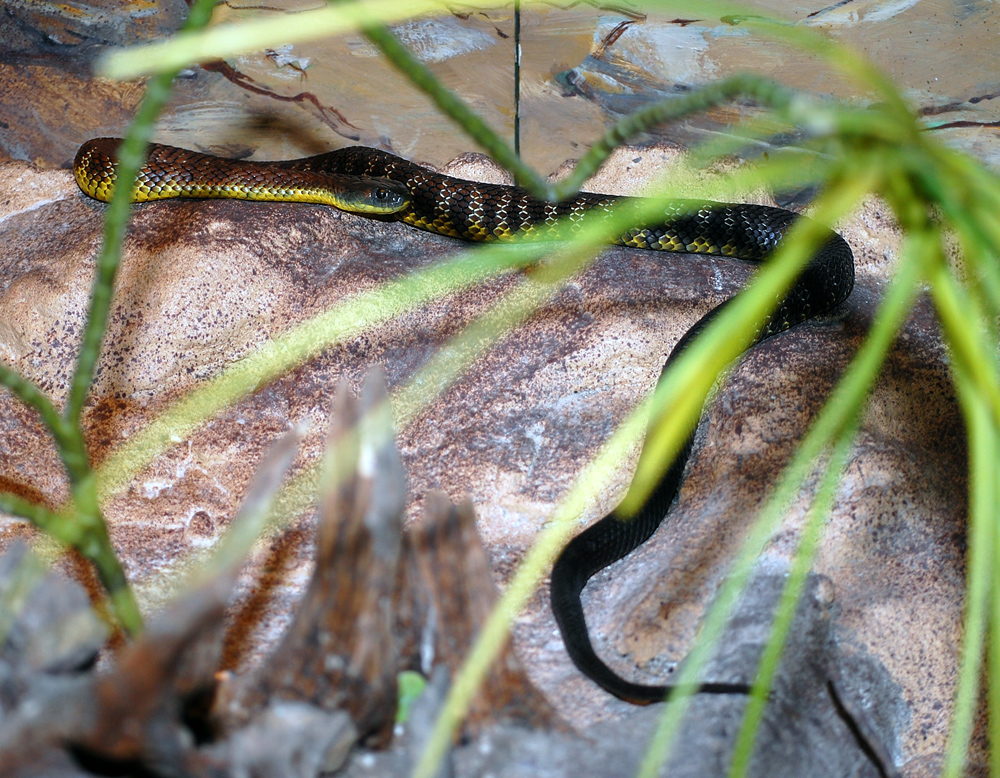
Photo: Featherdale Wildlife Park, Sydney NSW. Higher Resolution 3008 x 2000.
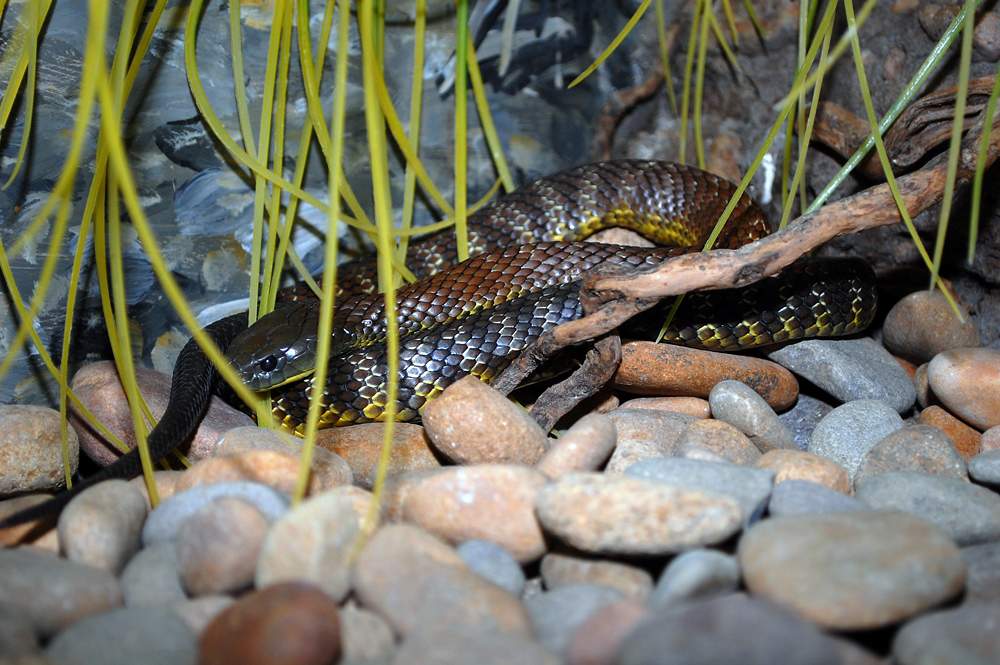
Photo: Featherdale Wildlife Park, Sydney NSW. Higher Resolution 3008 x 2000.
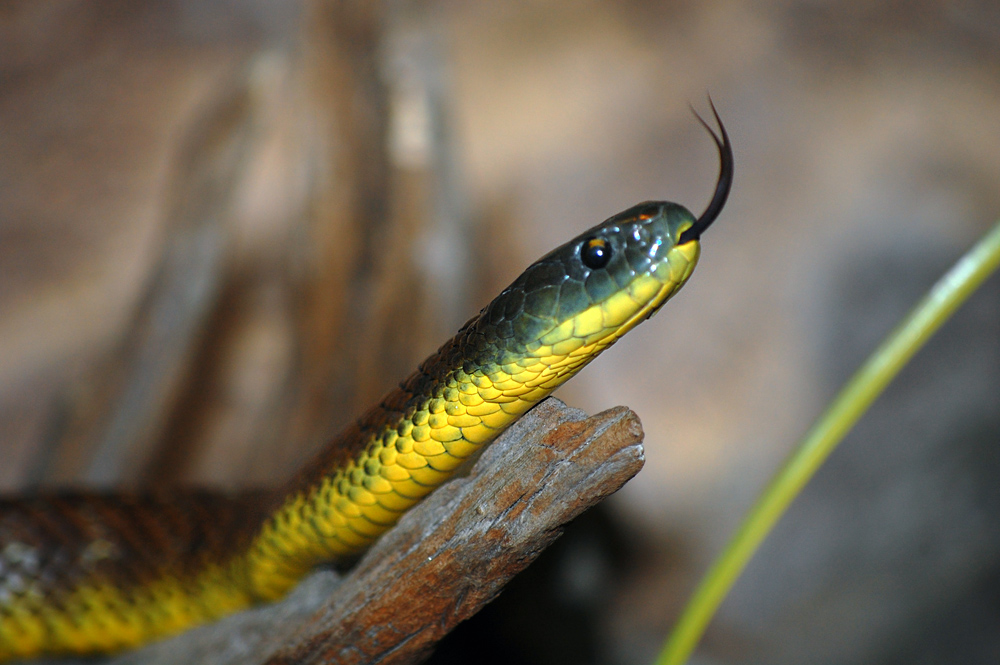
Photo: Featherdale Wildlife Park, Sydney NSW. Higher Resolution 3008 x 2000.

Photo: Featherdale Wildlife Park, Sydney NSW. Higher Resolution 3008 x 2000.

Photo: Featherdale Wildlife Park, Sydney NSW. Higher Resolution 3008 x 2000.

Photo: Featherdale Wildlife Park, Sydney NSW. Higher Resolution 3024 x 2012.

Shedded skin of Tiger Snake. Photo taken at Australian Reptile Park, Gosford NSW.
See Also
Australian Mammals
Australian Birds
Australian Frogs
Australian Fish
Australian Spiders and Their Faces
Australian Wild Plant Foods
Return to Australian Reptiles



